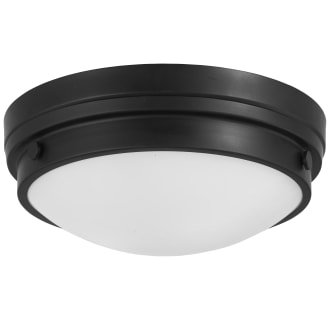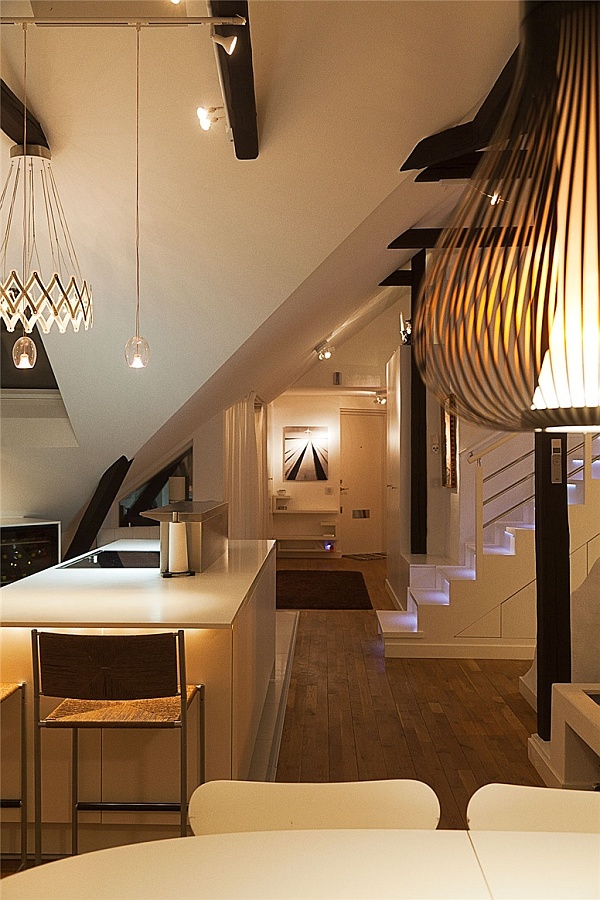The Importance of Kitchen Ceiling Lights
Kitchen ceiling lights play a pivotal role in creating an inviting and functional space. The right lighting can transform your kitchen, making it more pleasant for cooking, dining, and socializing. Unique ceiling lights add character and style, turning an ordinary kitchen into a visually stunning room. Beyond aesthetics, effective lighting enhances visibility and safety, ensuring you can see clearly while preparing meals and handling sharp utensils.
The kitchen is often considered the heart of the home, and lighting it properly sets the tone for the entire space. Well-chosen ceiling lights can highlight architectural features, accentuate the color scheme, and complement the overall design theme. They can also create zones within the kitchen, such as separating the cooking area from the dining area, making the space more versatile and user-friendly.

Lighting also affects mood and energy levels. Bright, well-lit kitchens are more conducive to productivity and cheerfulness, while dimmer, softer lighting can create a cozy and relaxing atmosphere. By selecting unique kitchen ceiling lights, you can tailor the ambiance to suit various occasions, from energetic morning breakfasts to intimate dinner parties.
Finally, the right ceiling lights can add value to your home. Unique and high-quality lighting fixtures are attractive features for potential buyers, contributing to a well-designed and appealing kitchen. Investing in distinctive ceiling lights can therefore be seen as both a functional enhancement and a long-term investment in your property.

Types of Unique Kitchen Ceiling Lights
When it comes to choosing unique kitchen ceiling lights, there are several types to consider, each offering different benefits and aesthetic appeal. Pendant lights are a popular choice, known for their versatility and range of designs. Hanging from the ceiling by a cord, chain, or rod, pendant lights can be used individually or in groups to provide targeted illumination over kitchen islands, dining tables, or countertops. Their styles range from modern and minimalist to vintage and industrial, allowing for creative expression in your kitchen design.
Chandeliers are another striking option, adding a touch of elegance and sophistication. While traditionally associated with formal dining rooms or grand entryways, modern chandeliers come in various styles that can suit a contemporary kitchen. They can serve as a focal point, drawing attention and adding a layer of luxury. From sleek, geometric designs to intricate crystal arrangements, chandeliers can elevate the aesthetic of any kitchen.
Recessed lighting offers a more subtle yet highly effective solution. Installed into the ceiling, recessed lights provide a clean, unobtrusive look while delivering ample illumination. This type of lighting is perfect for kitchens with low ceilings or where a minimalist style is desired. Recessed lights can be strategically placed to highlight specific areas, such as workspaces or decorative features, creating a well-lit and balanced environment.
Track lighting combines flexibility with functionality. Comprising a series of light fixtures mounted on a track system, this type allows for adjustable lighting directions, making it ideal for kitchens that require versatile lighting solutions. Track lighting can be configured in various shapes and lengths, and the individual lights can be moved or angled to suit changing needs. This adaptability makes track lighting an excellent choice for dynamic kitchen spaces.

Factors to Consider When Choosing Kitchen Ceiling Lights
Selecting the perfect unique kitchen ceiling lights involves several considerations to ensure they meet both your aesthetic and functional needs. First and foremost, assess the size and layout of your kitchen. Larger kitchens may benefit from multiple light sources, such as a combination of pendant lights and recessed lighting, to ensure even illumination. Smaller kitchens, on the other hand, might only need a single statement fixture or a series of compact recessed lights to provide sufficient light without overwhelming the space.
The height of your ceiling is another crucial factor. For kitchens with high ceilings, chandeliers or large pendant lights can add drama and fill the vertical space effectively. In contrast, kitchens with low ceilings might be better suited to flush mount or semi-flush mount fixtures that provide adequate lighting without making the space feel cramped. Adjustable fixtures like track lighting can also be adapted to various ceiling heights, offering a versatile solution.
Consider the overall style and color scheme of your kitchen when choosing ceiling lights. The lighting fixtures should complement your kitchen’s design, whether it’s modern, traditional, rustic, or eclectic. For example, sleek, minimalist fixtures work well in contemporary kitchens, while vintage or industrial lights can add character to a more rustic or eclectic space. The material and finish of the lights, such as brushed nickel, copper, or matte black, should also harmonize with other elements in the kitchen, like cabinet hardware and appliances.
Functionality is equally important. Think about the tasks you perform in your kitchen and how different lighting can facilitate these activities. Task lighting is essential for areas where precision is needed, such as over the stove, sink, or countertops. Ambient lighting provides overall illumination, creating a comfortable environment, while accent lighting highlights specific features or décor elements. A combination of these lighting types can create a well-rounded and functional lighting scheme in your kitchen.

Innovative Ideas for Unique Kitchen Ceiling Lights
To truly make a statement with your kitchen ceiling lights, consider innovative and unconventional options. One idea is to use sculptural or artistic light fixtures that double as pieces of art. These lights not only illuminate the space but also serve as conversation starters, adding a unique and personal touch to your kitchen. Look for fixtures with interesting shapes, intricate designs, or bold colors to create a focal point.
Another creative approach is to incorporate vintage or repurposed lighting fixtures. Antique chandeliers, retro pendant lights, or industrial-style fixtures salvaged from old factories can add a unique charm and character to your kitchen. These pieces often have a history and a story, bringing a sense of nostalgia and personality to the space. Pairing vintage lights with modern elements can create an eclectic and visually appealing contrast.
Using natural materials for your kitchen ceiling lights can also create a distinctive look. Fixtures made from wood, bamboo, rattan, or woven fibers bring warmth and texture to the kitchen, complementing natural or rustic design themes. These materials are not only aesthetically pleasing but also environmentally friendly, making them a great choice for eco-conscious homeowners. Natural material lights can create a cozy, inviting atmosphere, perfect for family gatherings and entertaining guests.
Finally, consider incorporating smart lighting technology into your kitchen ceiling lights. Smart lights can be controlled via smartphone apps or voice assistants, allowing you to adjust brightness, color temperature, and even color hues to suit different moods and activities. This technology offers convenience and flexibility, enabling you to create the perfect lighting ambiance with just a few taps or voice commands. Smart lighting can also include motion sensors, energy-saving modes, and programmable schedules, enhancing both the functionality and efficiency of your kitchen lighting.

Common Mistakes to Avoid
Ignoring the Kitchen Layout
One common mistake when selecting kitchen ceiling lights is ignoring the kitchen layout. It’s essential to consider how the lights will interact with the different areas and features of your kitchen. Poor placement can result in uneven lighting, shadows, and glare, making the space less functional and comfortable. Always plan the lighting layout in conjunction with the kitchen’s design to ensure balanced and effective illumination.
Overlooking Light Temperature and Brightness
Another mistake is overlooking the importance of light temperature and brightness. Different activities in the kitchen require varying levels of light. For example, task areas need bright, focused lighting, while ambient areas benefit from softer, warmer light. Choosing the wrong light temperature or brightness can affect the functionality and ambiance of your kitchen. Select fixtures that offer adjustable light settings or use a combination of different lights to achieve the desired effect.
Skimping on Quality
Skimping on the quality of your kitchen ceiling lights can lead to long-term issues. Low-quality fixtures may not provide adequate light, may be prone to wear and tear, and could potentially pose safety hazards. Investing in high-quality lighting ensures durability, better performance, and a more polished look. Consider the long-term benefits of durable and well-designed lighting fixtures when making your selection.
Neglecting to Layer Lighting
Neglecting to layer lighting is another common pitfall. Relying on a single type of light can result in a flat and uninspiring kitchen. Layering different types of lighting, such as ambient, task, and accent lights, creates depth and dimension, enhancing both the functionality and aesthetics of the space. Ensure that your lighting plan includes multiple layers to achieve a well-balanced and visually appealing kitchen.

What are some popular styles for unique kitchen ceiling lights?
Popular styles for unique kitchen ceiling lights include modern, industrial, vintage, and rustic designs. Modern fixtures often feature sleek lines and minimalist aesthetics, suitable for contemporary kitchens. Industrial lights, characterized by metal finishes and exposed bulbs, add a rugged, utilitarian feel. Vintage lights, such as retro pendants or antique chandeliers, bring a nostalgic charm, while rustic fixtures made from natural materials like wood and rattan create a warm and inviting atmosphere.
How can I choose the right size ceiling light for my kitchen?
Choosing the right size ceiling light involves considering the size of your kitchen and the height of your ceiling. For smaller kitchens, opt for compact fixtures that don’t overwhelm the space. In larger kitchens, you can use more substantial or multiple fixtures to ensure adequate illumination. The height of the ceiling also plays a role; high ceilings can accommodate larger or longer fixtures, while low ceilings are better suited to flush or semi-flush mount lights. Measure the space and consider the proportions to select appropriately sized lights.
Are LED lights a good option for kitchen ceiling lights?
Yes, LED lights are an excellent option for kitchen ceiling lights due to their energy efficiency, longevity, and versatility. LED lights consume less power and last significantly longer than traditional incandescent or fluorescent bulbs, reducing energy costs and maintenance. They are available in various color temperatures and brightness levels, making them suitable for both task and ambient lighting. Additionally, many LED fixtures are compatible with smart technology, offering advanced control options for enhanced convenience.
How can I incorporate smart lighting into my kitchen ceiling lights?
Incorporating smart lighting into your kitchen ceiling lights involves choosing fixtures compatible with smart home systems. Smart lights can be controlled via smartphone apps or voice assistants like Amazon Alexa or Google Assistant, allowing you to adjust brightness, color temperature, and even color hues. Look for smart bulbs or integrated smart lighting fixtures that offer these capabilities. Additionally, consider features like motion sensors, programmable schedules, and energy-saving modes to enhance functionality and efficiency.
What are the benefits of using natural materials for kitchen ceiling lights?
Using natural materials for kitchen ceiling lights offers several benefits, including aesthetic appeal, environmental sustainability, and a warm, inviting atmosphere. Fixtures made from wood, bamboo, rattan, or woven fibers add texture and a sense of coziness to the kitchen, complementing various design styles from rustic to modern. Natural materials are often eco-friendly, supporting sustainable design practices. They also create a unique, organic look that can make your kitchen feel more connected to nature and more comfortable for everyday use.

Kitchen ceiling lights, Ceiling lights, Drop ceiling lighting

Stylish Stockholm Loft With Classic Scandinavian Interior Design and Modern Overtones

Kitchen Kitchen hood design, Vaulted ceiling kitchen, Kitchen vent

Related Posts:
- Kitchen Light And Fan
- Kitchen Plinth Led Strip Lights
- Unique Kitchen Ceiling Lights
- Above Kitchen Cabinet Lighting Ideas
- Dark Wood Floors Light Kitchen Cabinets
- Energy Saving Kitchen Lights
- Recessed Lighting For Kitchen Remodel
- Large Play Kitchen With Lights And Sounds
- Light Colored Kitchen Countertops
- Kitchen Drop Ceiling Lighting